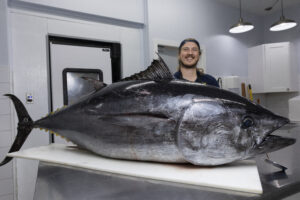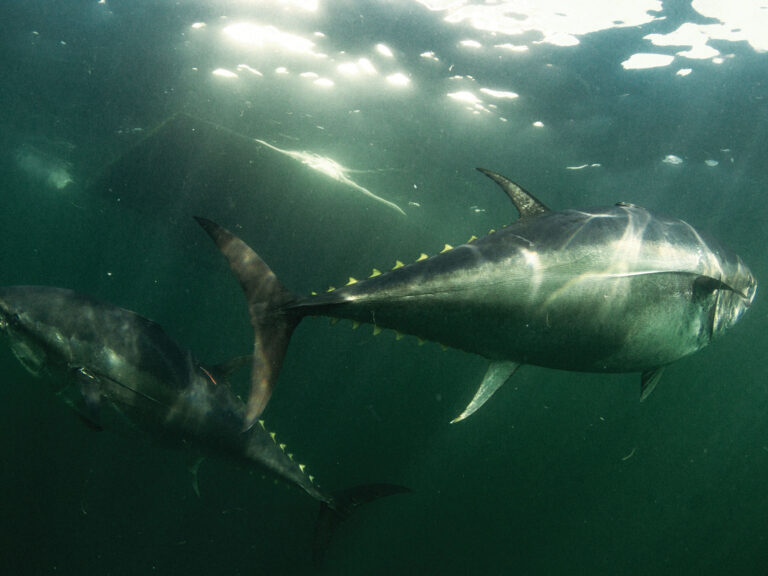How a Fly Tier Sees the Spring
Striper euphoria is now in full swing in the Northeast. It’s a time when guys are still crazy excited about catching an 18-inch schoolie, just because it means they are catching bass again. I’m no different and I’m sure like many others I spend a lot of my down time thinking about the fish. But as I hacked out another Clouser minnow on my vice, with the NBA playoffs on in the background, I started to wonder what serious fly tiers think about.
What motivates them in the flies they tie? So I dropped a few questions to Mike Rice, a professional tier who runs Mud Dog Flies out of Marshfield, Massachusetts. I’ve had the pleasure of fishing some of his patterns and I wanted to hear his thoughts.
** FFSW: When stripers start showing up in your home waters, what’s the first thing you look for? What forage are you expecting them to eat?**
** Mike Rice:** Movement of herring and shad in the estuaries and creeks are the first indicators we look for. Generally this will be followed by sporadic groups of schoolies followed by pushes of bigger fish. When they first show up they’re on larger baits like herring, shad, pollock and pogies (bunker), so larger Deceiver style flies, Grocery flies, and half & halfs from 2/0 to 4/0 are common.
As they arrive the squid start to show up so squid patterns are hot, especially in the rips. As the water warms in the shallows with the first few days of solid sun and good weather, they’ll push up onto the flats following silversides and sand eels. Sparse sand eel imitations like flatwings, lightly weighted Clousers and Jiggy flies are best to match these baits on the flats. The bass will also set up on the pods of “ocean going” sand eels that group up in deeper water. Heavier dressed versions of narrow tubular baits will get more hits with this crowd of bait.
Inshore, crabs and grass shrimp start to come to life and are targeted by fish in the backwater so a simple crab pattern is good to have should a sight casting situation arise. For grass shrimp, there is nothing better than a Crazy Charlie or a Gotcha.
** FFSW: Depending on what the bait is, what are some of the first flies you break out of your box, and why?**
** Mike Rice:** I mentioned a lot of the patterns above. But in the early season, when weather is still unsettled and there is a lot of particulate in the water, I focus on bait profile and light conditions more than the color of the prevalent bait. They will hone in on profile long before color.
That said, for herring, an olive or blue back is the way to go, for bunker and Pollock black/gray/lavender wings are good matches. With the bigger flies I like to see some pink and/or yellow in the body to show life and fat.
For weighted flies like half & halfs and Clousers, the standard chartreuse/white and all white seem to get hit the most.
For sand eel patterns on the flats, I go with an olive back with sparse gold flash. For sand eel patterns in deeper water, it’s black over chartreuse backs with silver flash.
** FFSW: Do you find striper behavior different on the spring run than the fall run? How do you adjust your presentation accordingly?**
** Mike Rice:** During the fall run you can throw a toaster at a bass and it will eat it. In the spring it’s not uncommon to come across a large group of fish when they first arrive that are picky or they just plain will not bite. Sometimes this can be dealt with by going to the other end of the spectrum—flies that are smaller or much larger than the present bait, like a 4/0 neon orange squid fly in a few feet of water on a flat, or obnoxious colors with a lot of flash.
I tend to be more mindful of the retrieve in the spring as opposed to the fall. When casting larger baitfish patterns I’ll use a fast strip with periodic stops to present a fleeing baitfish. Fishing a weighted fly, I’ll use fast strips with a pause to let the fly drop, and then strip fast again, to present a dazed bait. Fishing on schooled up sand eels or silversides, I’ll use slow short strips so the fly suspends and then makes an erratic movement that will help it stand out.
Overall, the rule of thumb is that four types of fly patterns will cover most situations and all stages of the water column:
- A weighted pattern like a Clouser.
- A long skinny profile fly like a flatwing.
- A wide body baitfish pattern, Deceiver style.
- A topwater pattern like a popper or slider.









